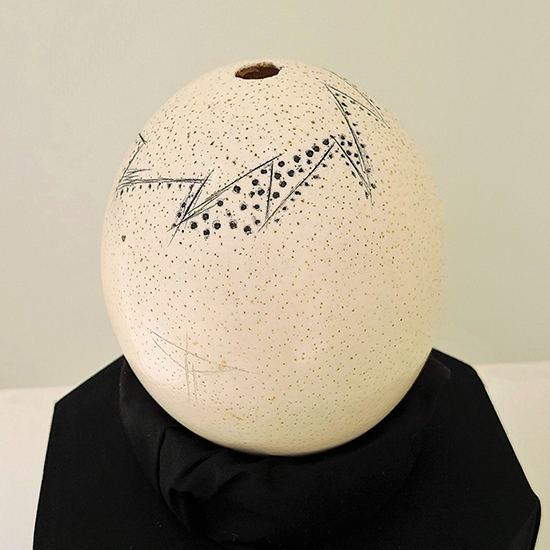San Ostrich Egg Canteen

The San people of southern Africa have lived in the region of the Kalahari Desert for thousands of years. Formerly called “Bushmen,” a label that is now recognized as both racist and sexist, the term San actually refers to a diverse collection of hunter-gatherer groups with historical and linguistic ties. Although they are traditionally nomadic people, in recent years many San have settled in larger groups near water sources or joined neighboring communities.
Ostrich eggs like this one from Botswana have traditionally been used by the San as canteens. Having a method to store water is incredibly important in the desert, and ostrich eggs provide a means to accomplish that. Additionally, ostrich eggs are very nutritious, equivalent to about two dozen chicken eggs. Acquiring an egg, however, is not an easy task because ostriches can slash with their long talons. Successful hunters locate an ostrich nest and either wait for the vigilant adults to leave or use a high-risk strategy of scaring it away.
Once collected, a small hole is made in the egg to drain the contents to eat, and the egg is cleaned and filled with water when available. The hole is then resealed with beeswax. The eggs are often decorated with simple designs as this one is. The filled eggs are buried along frequently traveled paths to provide drinking water while hunting and foraging. The San also make jewelry from pieces of broken ostrich eggshells.
This ostrich egg canteen is featured in the virtual exhibit Animal Origin: Tokens and Tools from Faunal Remains.
Robby Outland (’21) contributed to this post.

